Ferns (Pteridophyta, formerly Polypodiophyta) are one of the oldest plants formed about 350 million years ago. There are different types of ferns exist.
Today, most ferns are herbaceous species (with a few woody ones in the tropics), but in the ancient past, 300 million years ago, ferns used to be “wood giants” or tree ferns and the dominant factors in dense carbon forests.
In this article, we will discuss 23 amazing types of ferns species.
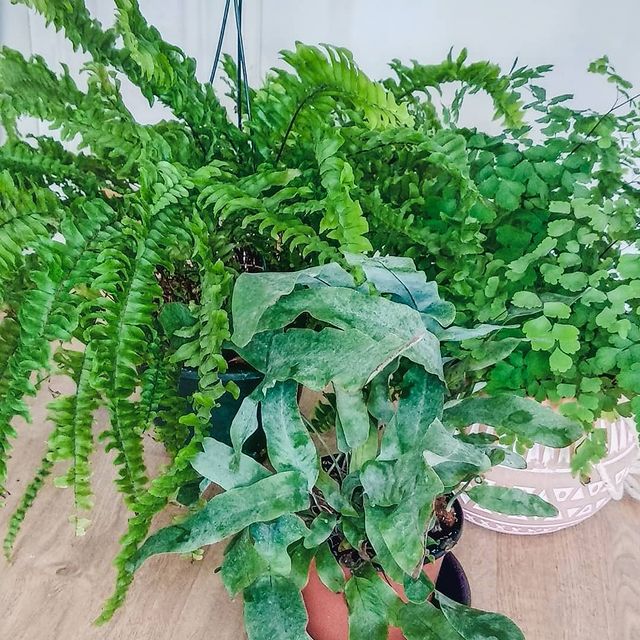
Herbaceous species began to occur “under the sun” 150 million years later.
Currently, our planet is prosperous with about 12,000 different species of ferns, and there are about 5,000 unidentified ones. Although some have left their roots underwater, they mainly occupy terrestrial and wetland habitats.
This colorful world includes species of different sizes: some reach only a few millimeters above the ground, while opposite, some species grow about 80 feet with leaves eight feet long!
What are the characteristics of fern plants?
In addition to the unique leaves that make ferns sought-after decoration and recognizable even by non-specialists, ferns are plants with a particular structure.
Structure
The fern body consists of a root, a stem, and a leaf. The fibrous root and rhizome grow below the surface of the earth.
Young leaves develop from perennial rhizomes. A conducting bundle system extends through the tree, from the roots to the leaves, supplying water and nutrients.
Immature fronds appear curled out of the ground, and as they grow, they unroll and stretch, creating airy, delicate green structures.
Ferns do not bloom
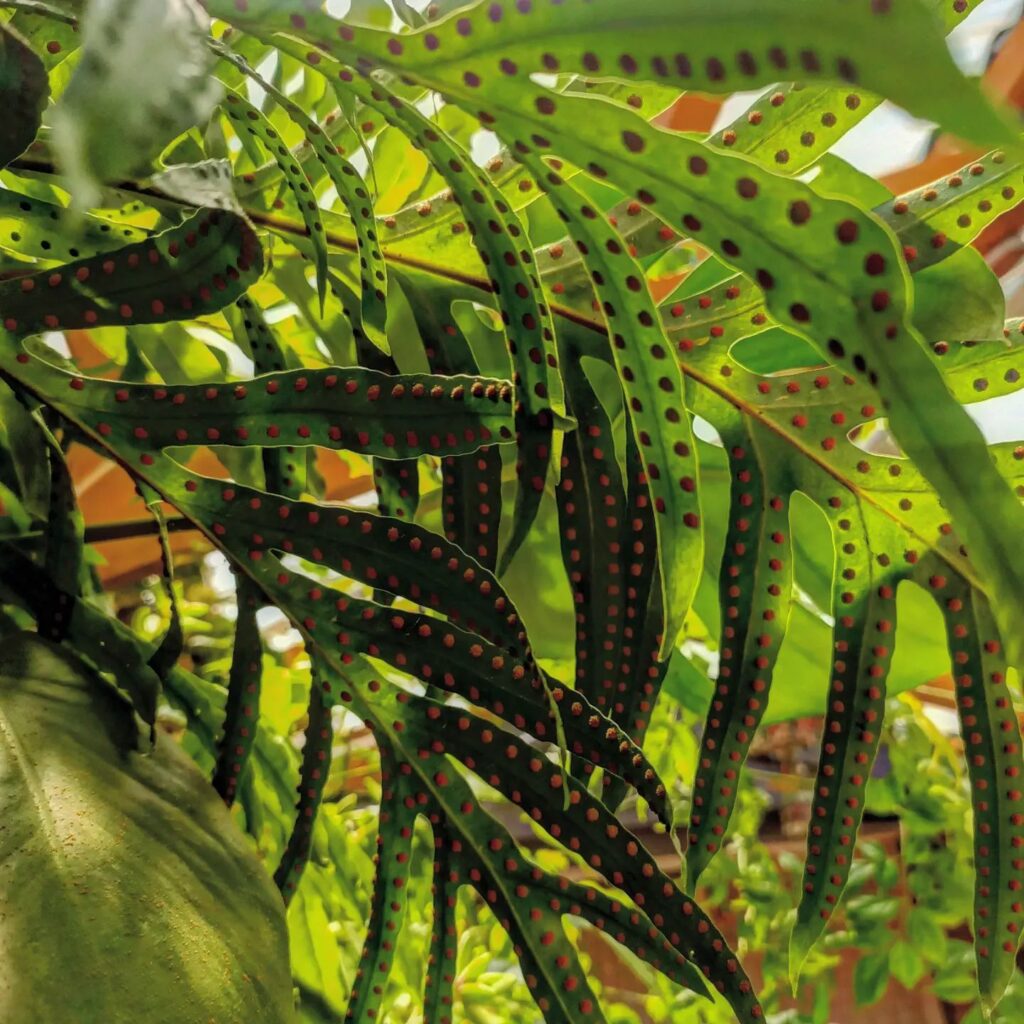
The fern flower is a mythological category because these ancient plants do not bloom.
In nature, regardless of its decorative value, the flower is an organ that enables reproduction. That is why ferns, as non-flowering plants, reproduce in a specific way:
- Using spores collected in point containers on the back of leaves blown by the wind, thus enabling the spread of the species
- Vegetatively, by new shoots growing from the rhizome root.
Ferns throughout history
Thanks to numerous cultivars, ferns are popular houseplants or garden plants nowadays. However, these plants are far from mere decoration! On the contrary, these ancient plants have made an outstanding contribution to the development of civilization in general!
Here are just a few of the examples:
- Carboniferous ferns in the process of fossilization created coal that man uses for heating, food preparation, and earlier, with the beginning of the industrial revolution, for starting a steam locomotive.
- Herbaceous ferns are used in food, like salads, spices, teas, and as biofertilizers in agriculture.
- Rhizome roots of some species such as Licorice fern, native Americans used as a remedy for sore throat, cough, and cold due to its antiseptic effect.
- They can often be seen in pots in gardens, houses, and business premises, undoubtedly because of their attractive appearance and the Eastern belief that they bring happiness and peace. In New Zealand, ferns symbolize eternal youth, while in Japan, they are believed to bring strength, offspring, and stability to families.
Types of Ferns
Even without the historical connection and awareness of the importance of these plants, ferns are certainly a group that attracts special attention and are often on the list of desirable decorations for the house or garden.
That is why below we bring you the most popular types of indoor and outdoor ferns organized into two categories:
- Indoor fern – decorative, evergreen ferns that will greenify and beautify medium to low-light parts of your home
- Outdoor fern – garden fern, mainly deciduous fern, can thrive as perennials in shade gardens in the northern hemisphere.
1. Indoor types of ferns
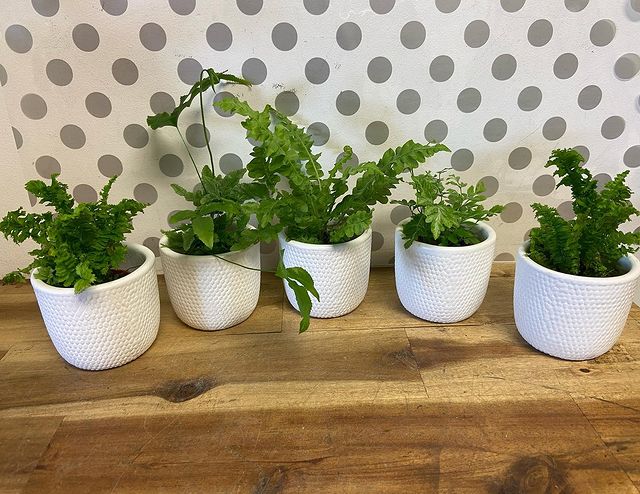
Most indoor ferns come from tropical areas with warm climates and high humidity. These plants do not tolerate low temperatures outside their native zone and thrive in a protected environment.
Among the many ferns with which you can decorate your home, we have singled out the 10 most popular species listed below.
2. Boston Fern (Nephrolepis Exaltata)
The most commonly grown indoor fern is Nephrolepis exaltata, known as Boston fern, Sword fern, Ladder fern, or Boss fern.
Although it bears the name Boston fern, it is not exclusive to New England and grows in other tropical areas, such as South Indonesia and South Africa.
Boston fern has sword-shaped, densely arranged, blue-green fronds with tiny leaflets, giving the plant an irresistible lacy or feathery appearance.
The curly new fronds are erect as they appear, but as they grow, they arch gracefully, making the Boston fern an ideal candidate for growing in hanging baskets or raised stands.
Under the right conditions, the Boston ferns grow one to three feet tall and two to three feet wide. However, this is a slow-growing species similar to many other fern plants, so you cannot expect it to reach its maximum in one season.
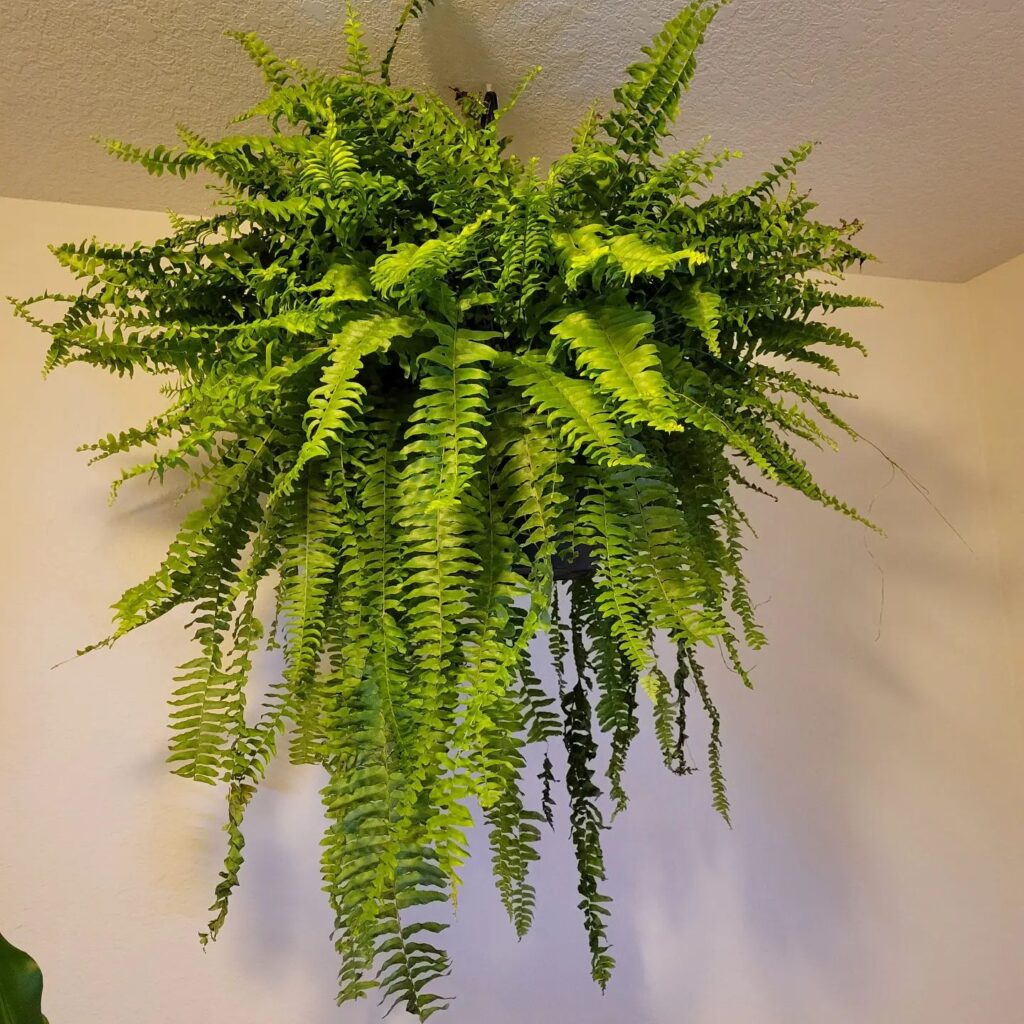
3. Maidenhair Ferns (Adiantum Capillus Veneris)
Maidenhair fern is a graceful and lacy perennial from the Adiantaceae family. It grows in southern and western Europe, warmer parts of Asia, and Central and South America.
Maidenhair fern is pretty rare despite its reasonably widespread habitat, and you will not see it often as a wild species.
The delicate maidenhair ferns grow up to one and a half feet in height. Small, only half-inch long fan-shaped leaves, fresh greenish color grow densely on thin and tender stems, contrasting dark almost black color.
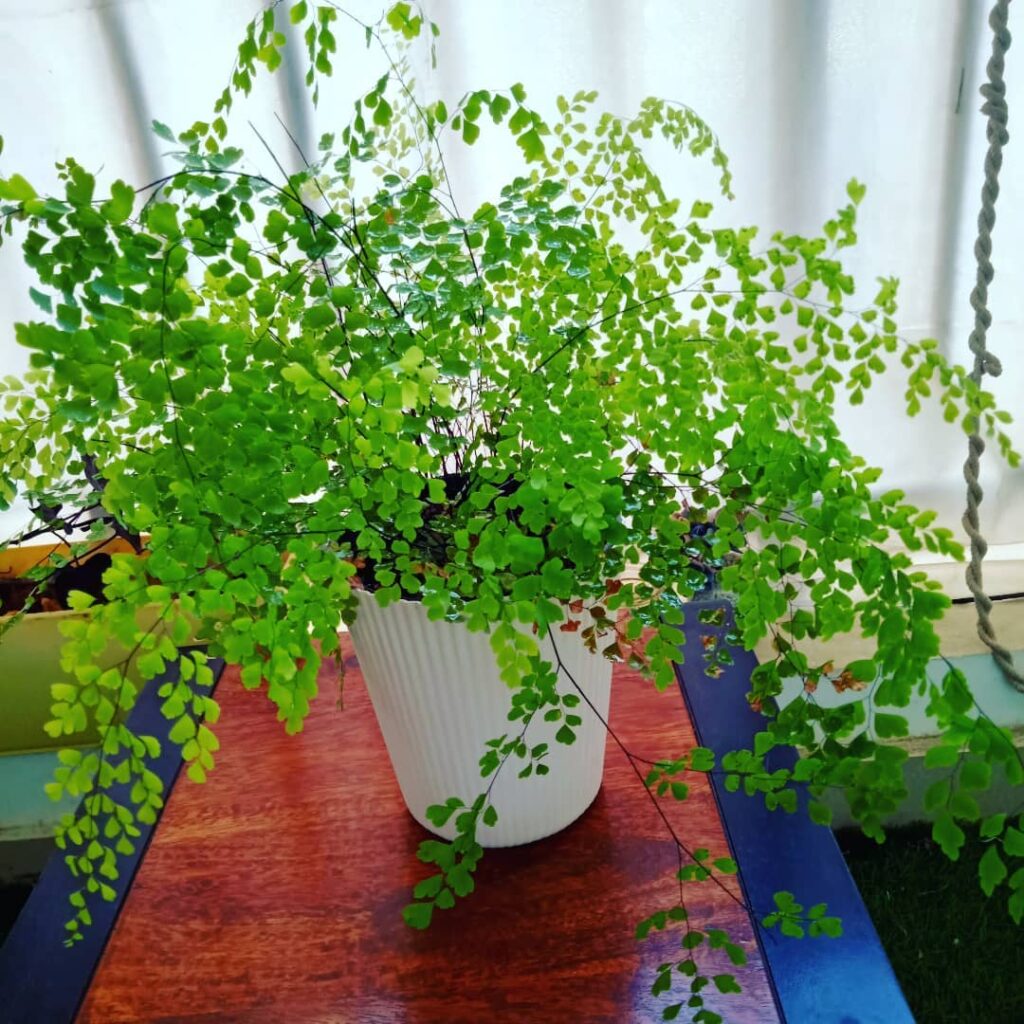
Thin branches often bend under the weight of the leaves, which makes the plant look gorgeous in hanging baskets.
On the underside of the leaves with a jagged upper edge, you can see white dots in which spores grow. From July to September, the spores ripen and become dark brown.
The airiness and filigree beauty of its canopy will easily find their way to your heart, so it is no wonder that Maidenhair fern is one of the most sought-after indoor fern species.
4. Lemon Button Fern
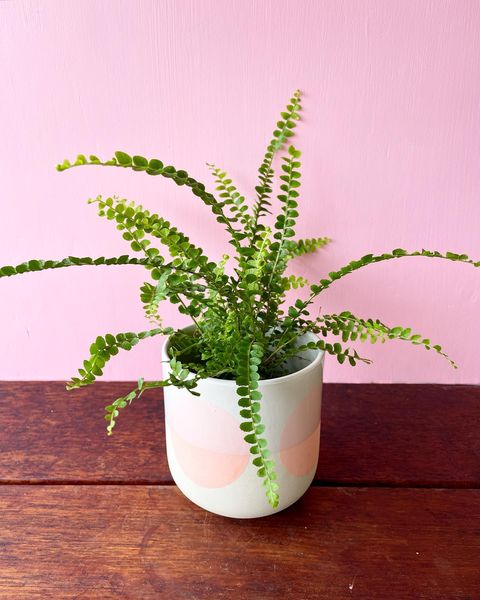
The Lemon button fern is an easy-to-maintain evergreen fern that beginners and experienced plant growers can grow just as successfully.
The appearance of this plant best describes its name. The bright green, button-shaped leaves have a diameter of about half-inch and grow oppositely along the central stem of the frond.
The plants are small, and fronds do not grow more than 12 inches in length, making the plants ideal indoor ferns suitable for almost any space, even the windowsills or terrariums. In addition, when touched, the leaves emit a mild lemon-like odor.
Manageable size is not the only trump card of this plant. It is very adaptable to the level of illumination and will thrive in bright indirect light but also low-light positions.
It is one of the few plants in general that thrives in a pot without a drainage hole, as long as it has a drainage layer of coarse gravel at its bottom that prevents direct contact between water and roots.
5. Kangaroo Paw Fern (Microsorum Diversifolium)
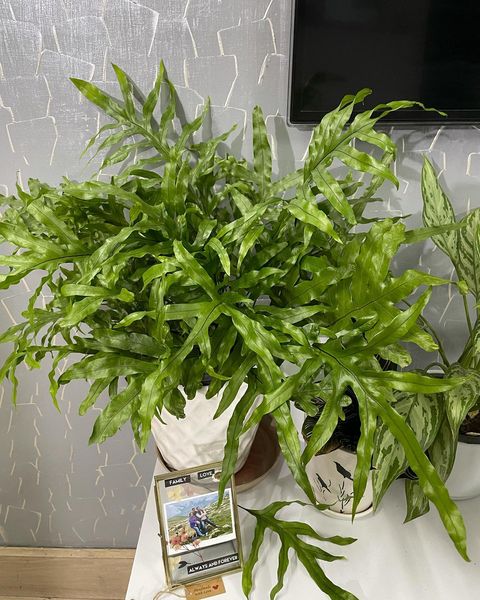
Although fern is associated with light green feathery leaves for most people, not all ferns are like that. One of those with atypical leaves is the Kangaroo paw fern, native to Australia.
However, the link between this species of fern and kangaroo is not just a shared habitat.
Namely, this tropical fern species has six inches long, entire, and shiny dark green leaves which, as they grow, lose their regular shape and acquire unusual indentations on the edges, more and more resembling the imprint of a kangaroo’s paw.
The leaves appear on semi-wire stems growing from a hairy rhizome root that spreads horizontally, so the plant develops more width than height.
Therefore, Kangaroo paw fern can grow as a dense ground cover and as an epiphyte on downed trunks, logs, or rock cracks in its natural environment.
Around the world, the Kangaroo fern is a prized evergreen fern because it brings greenery to low light corners, where many other plants struggle with lack of light. But, of course, it can grow in brighter places as long as it is out of reach of direct bright sun.
6. Staghorn Ferns (Platycerium Bifurcatum)
A special place among the atypical ferns belongs to the unusual Staghorn ferns or Platycerium.
These fascinating plants with out-of-this-world appearance originate primarily from tropical Africa, but it is not the only area where they grow. You can see them also in New Guinea, South Asia, and South America.
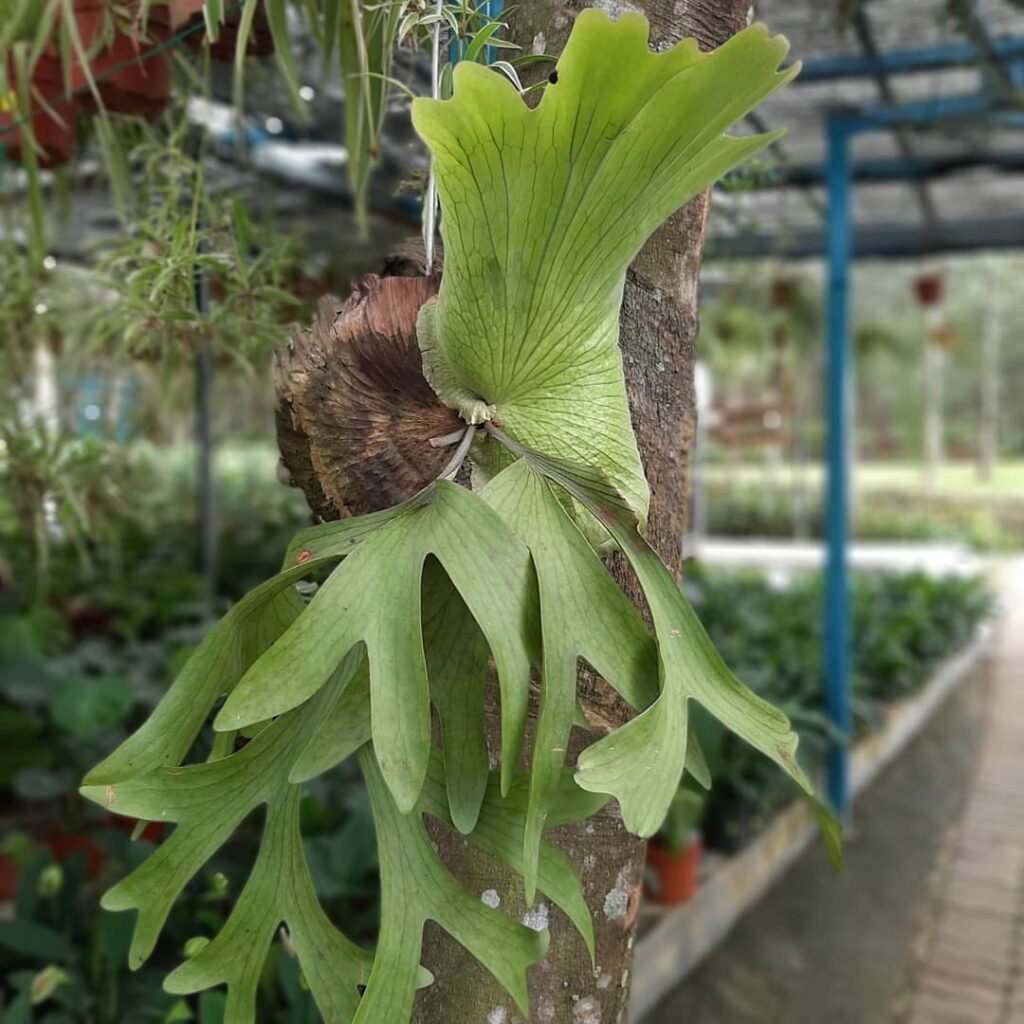
The genus includes about 18 different plants with two leaf types on the same plant.
The upper, leathery, silver gray-green foliage is often in the form of deer antlers and has the function of a shield: they collect fallen leaves and insects that decompose to become nutritious for the plant while protecting the sensitive root from excess rainfall.
The lower smaller leaves, which can even be brown or dark green, produce spores, ensuring the plant’s reproduction.
Staghorn ferns are epiphyte and often grow on the bark of tropical trees. Like Airplants (tillandsia), they can take food and water through the large upper leaves, making them self-sufficient plants that are relatively easy to grow.
Therefore you could place your staghorn fern attached to the bark of a tree or in a nest of moss in various hanging installations.
7. Bird’s Nest Fern (Asplenium Nidus)
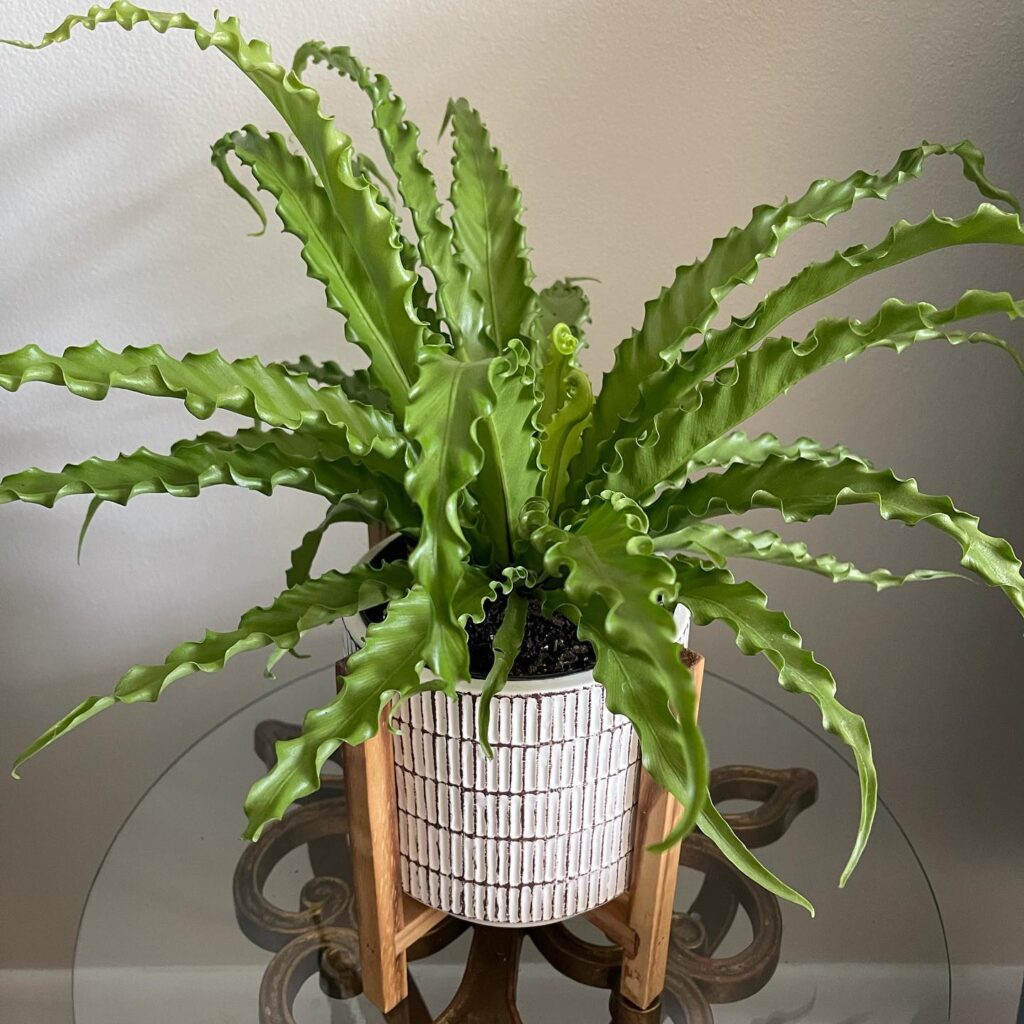
Another type of indoor fern with whole leaves is the Bird’s nest or Asplenium Nidus. This plant originated from Africa and got its name because the central part of the plant resembles a neat bird’s nest in its arrangement of leaves.
In nature, the Bird’s nest fern is an epiphytic plant that grows in the bark or tropical trees’ canopy. When growing it indoors, you can plant it in acidic substrate moss or attach it to a piece of tree, similar to Staghorn fern, because the plant can collect nutrients and water from its environment, not just through the roots.
The leaves of this fern plant are simple, light green, long, and narrow, resembling banana leaves or seagrass leaves, wrinkled or wavy towards the edges, and one of the most popular varieties is Crispy wave fern with ribbon-shaped, wrinkled bright green leaves.
The wrinkling of the long fronds depends on the amount of light that the plant receives because plants that grow in low light conditions have almost completely flat leaves.
Unlike most ferns, however, the Bird’s nest fern can withstand the occasional drying of the substrate. In other words, this fern plant will not resent you if you sometimes forget to water it, which is not the case with most other types of ferns.
8. Asparagus Fern (Asparagus Sprengeri)
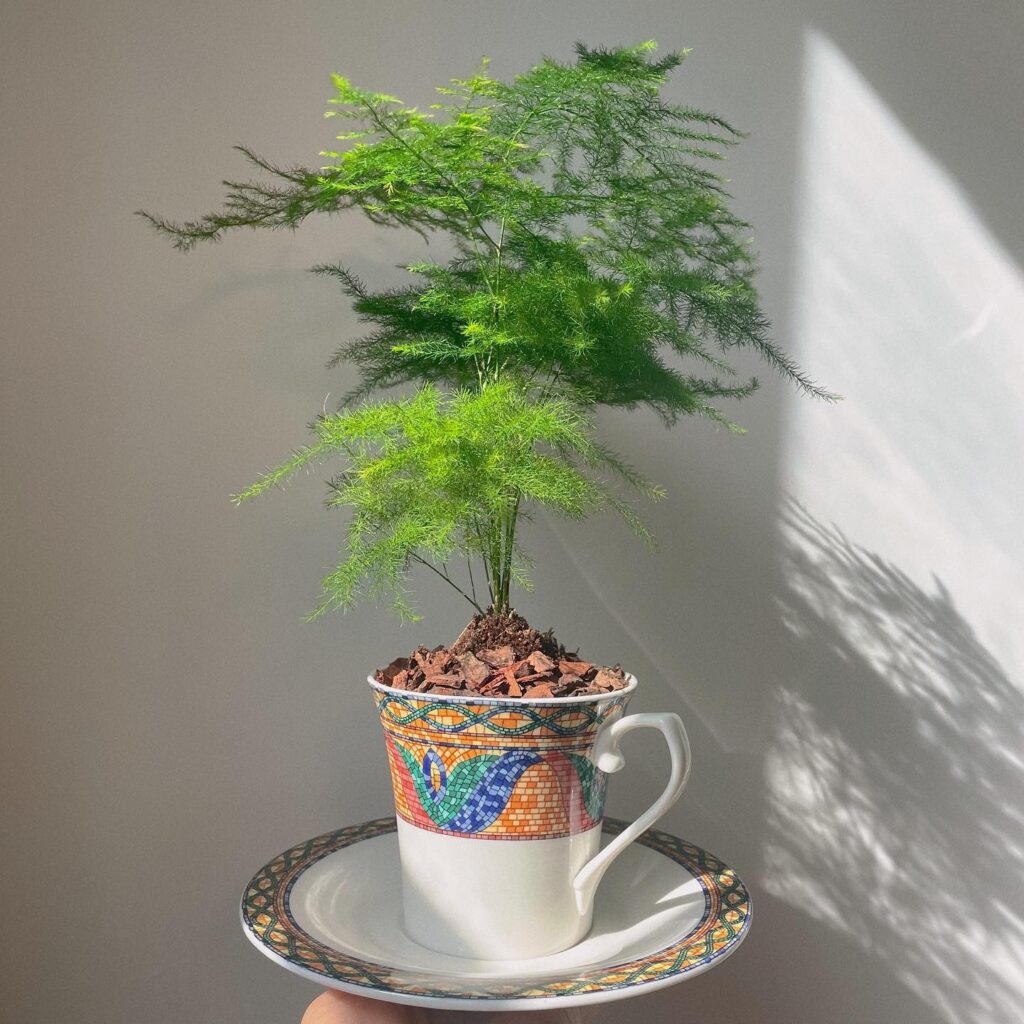
Although it is not a fern at all, we have included Asparagus fern on the list since the leaves of this plant are reminiscent of feathery fronds, which explains its name, Asparagus fern.
Asparagus is a perennial herbaceous plant from the Asparagaceae family. Very thin, half-inch long, and needle-like leaves grow from the long, firm stems forming a delicate “fronds” structure.
However, unlike ferns, this plant blooms with small, white-green flowers. The fruits are tiny toxic berries that change color from green to black.
The plant originates from South Africa and includes more than 300 species, among which several are grown as durable and resistant indoor ornamentals.
Asparagus fern loves lots of light and temperatures of 50 to 65 F. It develops up to three feet in width in favorable conditions, and the shoots-branches reach six to eight to three feet in length!
Therefore, with its arching fronds, it looks like a stunning soft green lace waterfall in hanging baskets or on pedestals.
It would help if you water abundantly and mist your plant frequently in summer and less frequently in winter. Yet, never allow the soil in the pot to dry completely.
9. Cretan Brake Fern (Pteris Cretica)
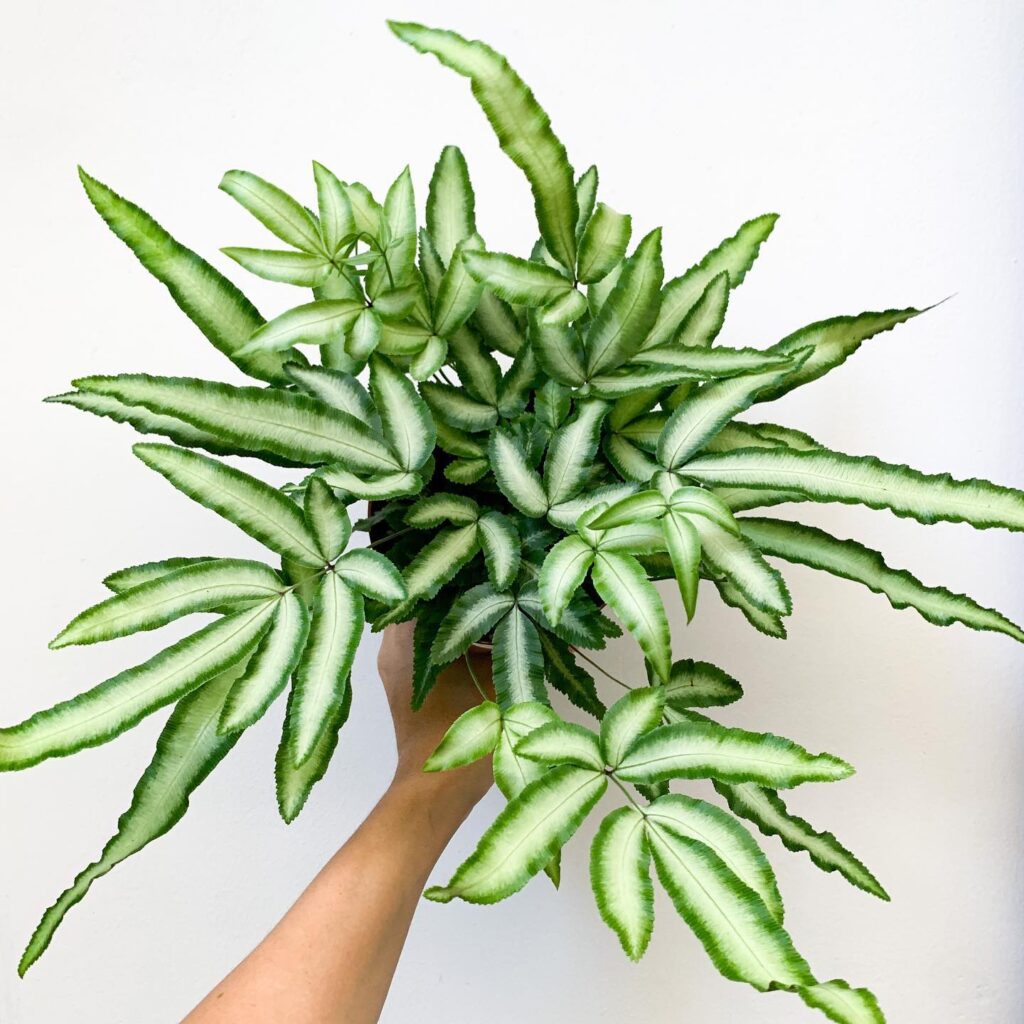
Another great type of indoor fern that is not difficult to grow, Cretan brake fern or variegated table fern, is a cultivated variant of the indigenous plant that grows in subtropical regions of Europe, Asia and Africa.
The fronds of the Cretan fern consist of two or four pairs of long, linear leaves whose edges are slightly bent, serrated and green or brown. The high, wiry leaf stalks emerge from a small, creeping rhizome root, making up one-half of the total leaf length.
Cretan brake fern is one of the few variegated ferns with leaves that have light, middle and dark edges. One of the most beautiful varieties is the Albo-lineata, whose stunning, dark green serrated edges frame pale green, almost white leaves.
10. Rabbit’s Foot Fern (Davallia Fejeensis)
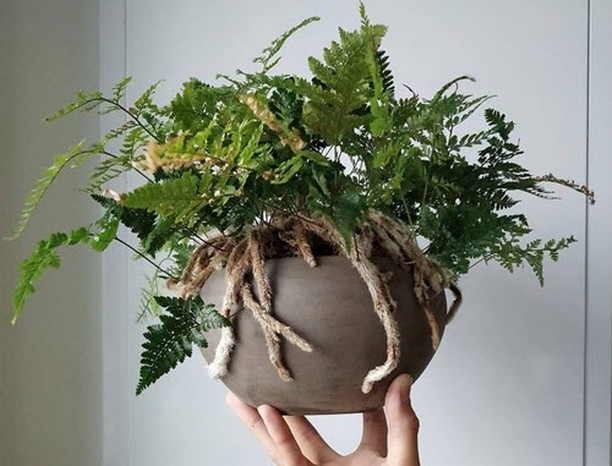
Rabbit’s foot fern with a branched, hairy rhizome resembling a rabbit’s paw crawling above the ground is a very unusual sight! The unique root system is a superb decoration and a functional organ by which this epiphytic plant takes water and food from its surroundings.
Coming from the Fiji islands as an outdoor plant, Rabbit’s foot fern can only grow in the US climate zone 10 to 12, while in colder regions, the fern grows as an indoor plant.
The plant looks marvelous when growing in hanging baskets where its rhizome can crawl freely and is an excellent choice for all those who prefer strange and unusual plants.
11. Blue Star Fern (Phlebodium Aureum)
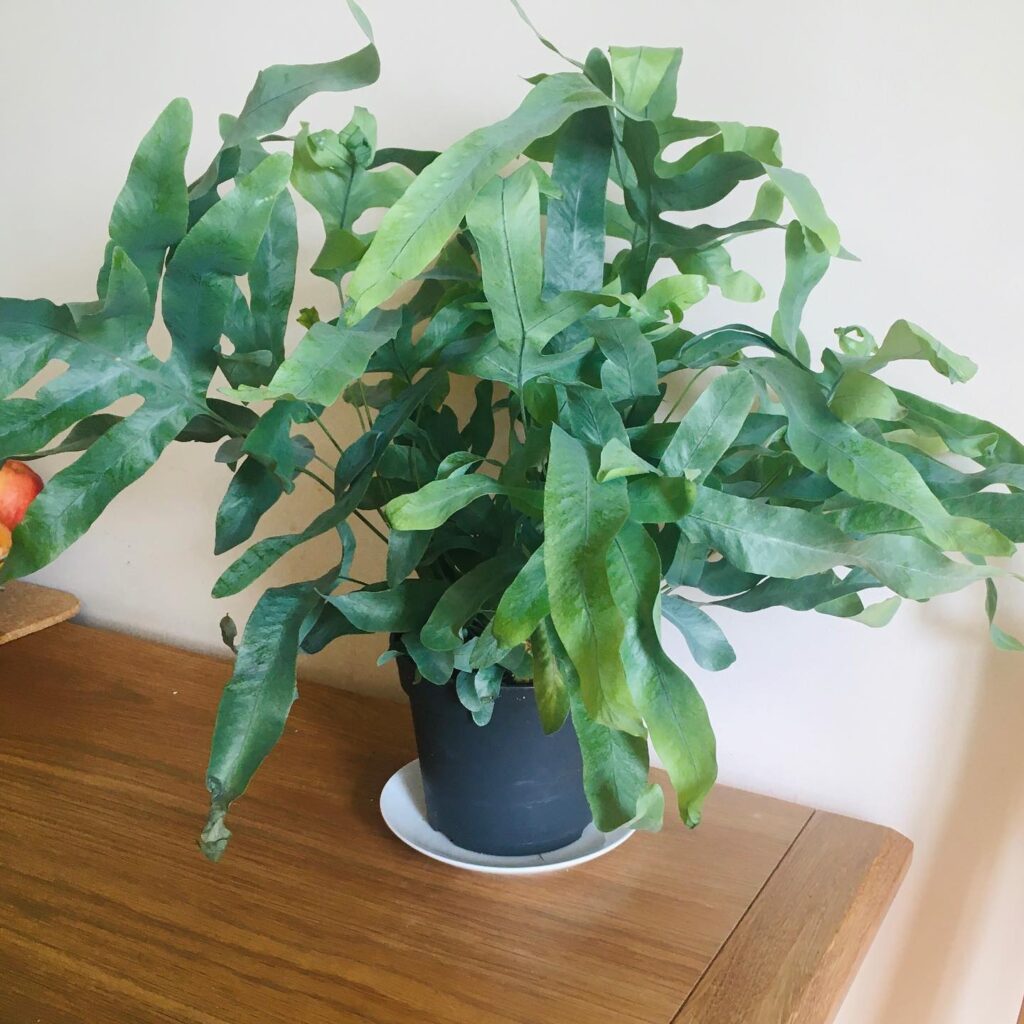
Blue Star fern is an epiphytic plant from the tropical forests of South America that is popular among fern lovers because of the unusual gray-blue color of the fronds.
In nature, this fern grows attached to tall trees that it adheres to by its roots. However, it is not a parasitic plant, meaning it does not take nutrients and water from the host.
Blue star fern is not lacy like many other species – the leaves are large with a blunt tip and banded like a tongue or finger.
The creeping rhizome root is covered with golden brown hairs, and, as in other epiphytes, it is visible on the surface of the substrate and often escapes over the edge of the pot.
The unusual color of the roots is the reason for the other name of this plant – Gold foot fern, and sometimes you can find it under the name Bear’s foot fern.
Outdoor Types of Ferns
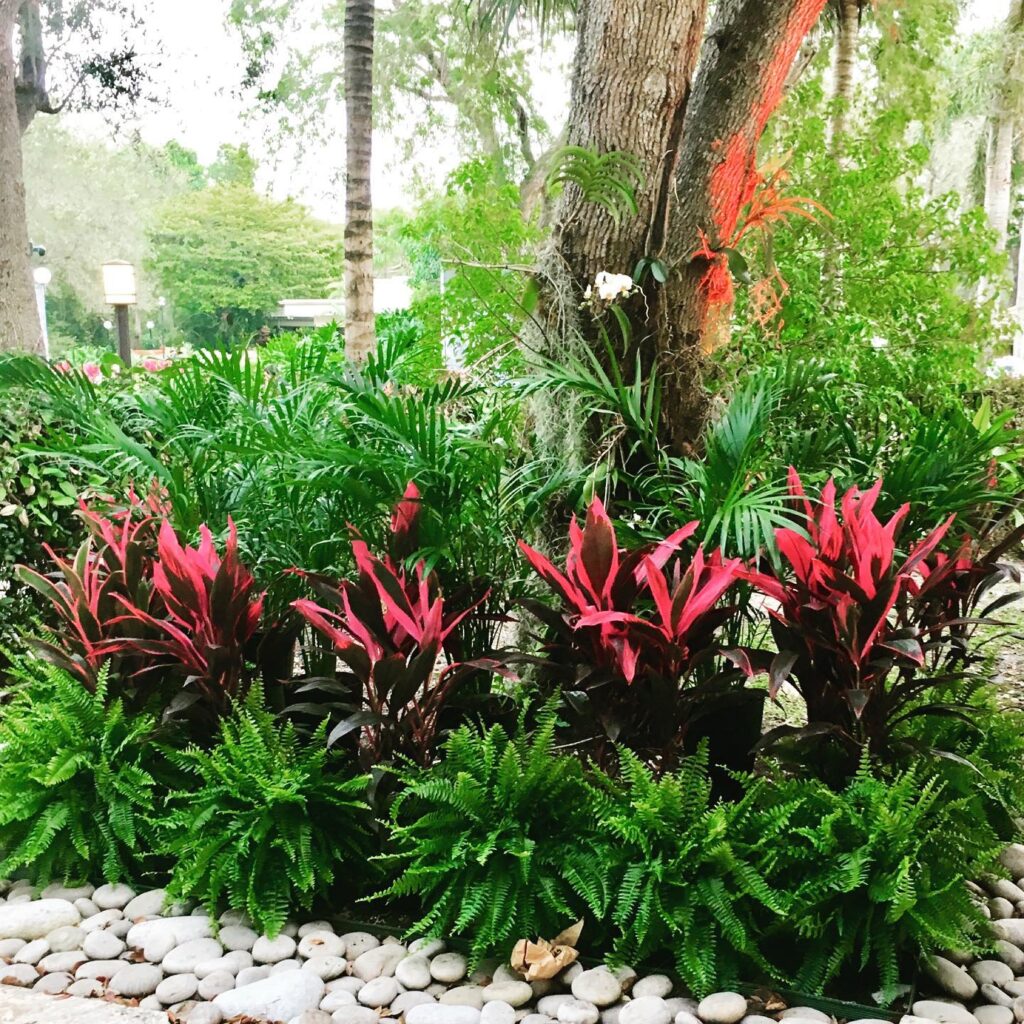
Unlike indoor types of ferns, which are primarily evergreen species of tropical origin, garden ferns or outdoor ferns come from colder regions, which means they are not bothered by low temperatures.
True, the aboveground part of the plant might disappear during the winter months, but the root remains undamaged, so the plant comes to life again in the spring.
And while the plants from the first group can grow as indoor and outdoor ferns where climatic conditions allow, the types of fern plants from the second group are not suitable as potted ferns due to their size or the fact that they are deciduous.
1. Ostrich Fern (Matteuccia Struthiopteris)
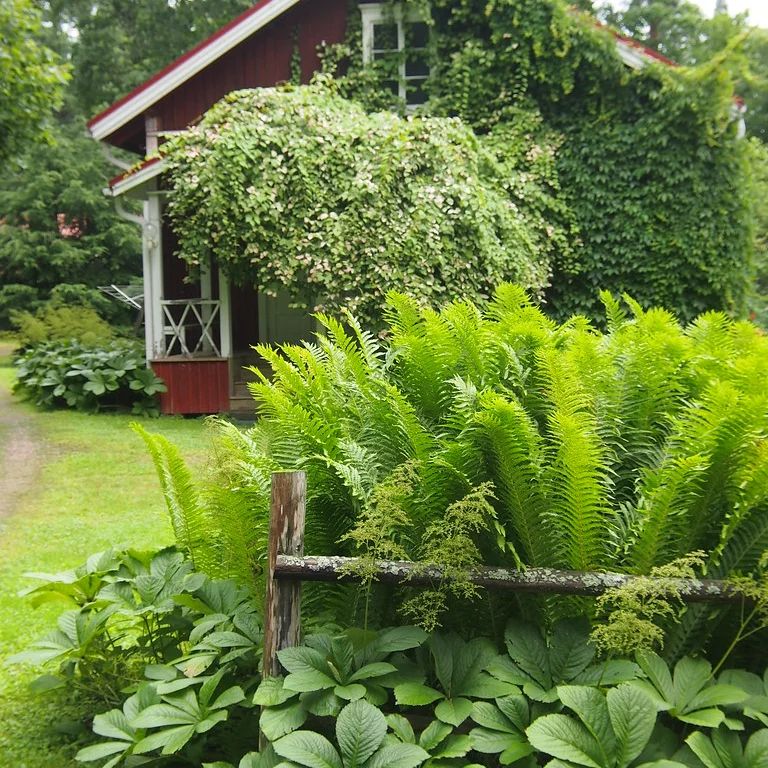
Ostrich Fern comes from North America, where it grows as a marginal wood fern in moist soil and is an ideal plant for greenifying shady parts of the garden where other plants find it difficult to thrive.
Ostrich fern grows up to six feet in height. In the spring, sizable feathery arching fronds which are sterile appear first. Shortly after that, smaller, only 12 to 20 inch long fertile fronds appear, bearing spores and remaining upright after the large leaves die from low temperatures.
In ideal conditions, the underground rhizome root is prone to uncontrolled spreading! It means the plant can be even invasive, endangering the plants next to which it grows.
2. Cinnamon Ferns (Osmundastrum Cinnamomeum)

Another beautiful species of fern that comes from eastern North America is a Cinnamon fern or Osmundastrum cinnamomeum.
Erect, green, feathery tall fronds without spores can grow up to four feet in height. In the middle of the plant grow other, lower plume-lay leaves that bear spores and have a cinnamon color which explains the plant’s name, Cinnamon fern.
The pronounced contrast between these two types of fronds makes this plant very decorative as the central frond is somewhat reminiscent of a ‘flower.’
As a garden plant, Cinnamon ferns thrive only if the soil is moist enough because, in their natural habitat, this plant grows in shaded wetlands and on moist mountain slopes.
3. Hart’s Tongue Fern (Asplenium Scolopendrium)

While most outdoor ferns enter the dormant phase in the winter months, when their aboveground part is entirely or partially damaged, Hart’s tongue fern carries greenery into the bleak winter landscape.
Namely, this small clumping fern of complete, light green, 12 to 18 inches long fronds retains its leaf mass even during winter.
Evergreen ferns among outdoor ferns are pretty rare, so Hart’s tongue fern, with its fresh green rosette of leaves, is reasonably high on the demand list. The brown sori with spores on the back of the mature leaves further emphasize its attractiveness.
The plant grows best in partial or complete shade on humus and well-drained soil. The rhizome root spreads horizontally, so it can also grow as a ground cover forming dense green colonies.
4. Australian Tree Fern (Sphaeropteris Cooperi)
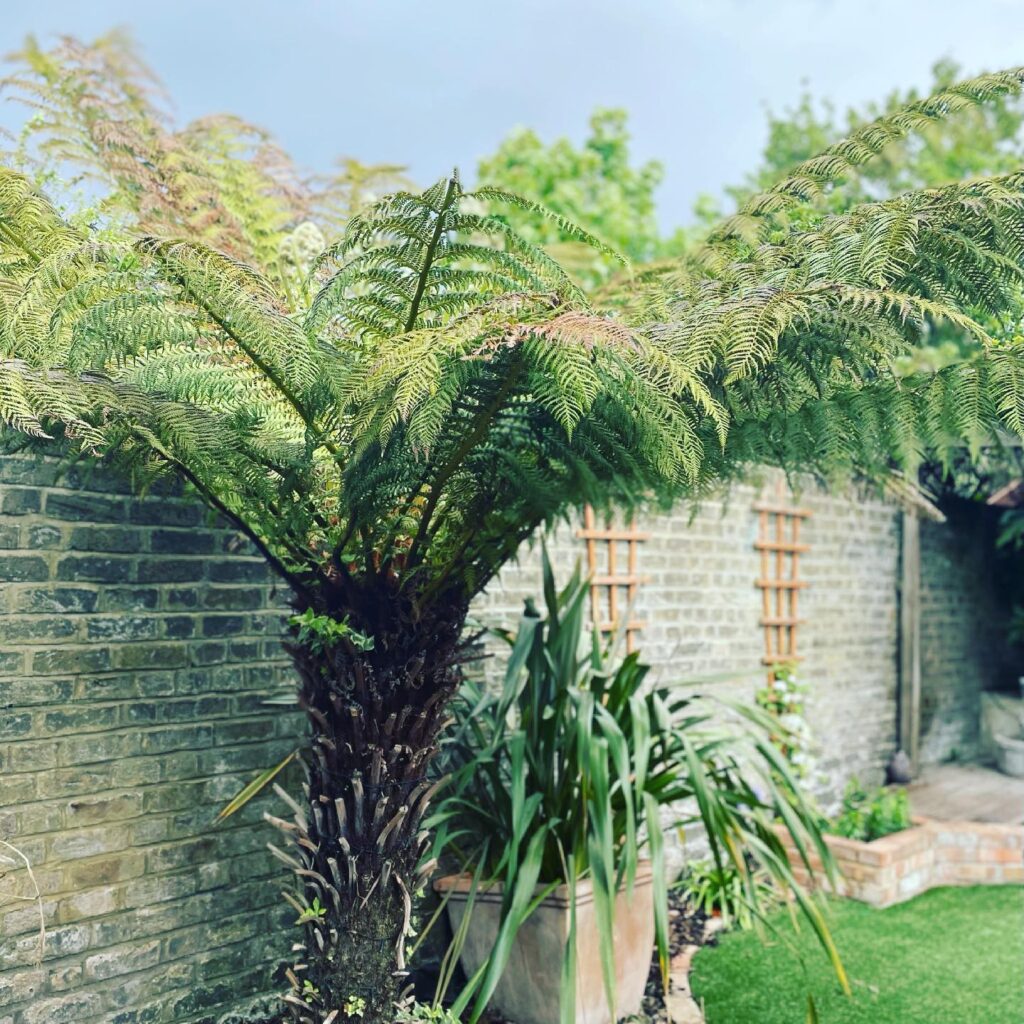
Australian tree fern, known in its homeland as lacy tree fern, is a giant fern plant that grows over 30 feet tall with a central trunk like a real tree and a canopy composed of horizontally placed long and large green fronds.
Undoubtedly, its exotic appearance and somewhat prehistoric vibe make it a focal point in every garden.
Unfortunately, due to its tropical origins, this plant can only be enjoyed by residents of warm regions such as South and Central Florida, where the giant fern can grow outdoors as an evergreen plant.
The plant needs winter protection in the northern parts or can grow in large greenhouses. It prefers a warm and moist environment, shady position, and well-drained moist soil rich in organic material.
5. Japanese Painted Fern (Athyrium Niponicum)
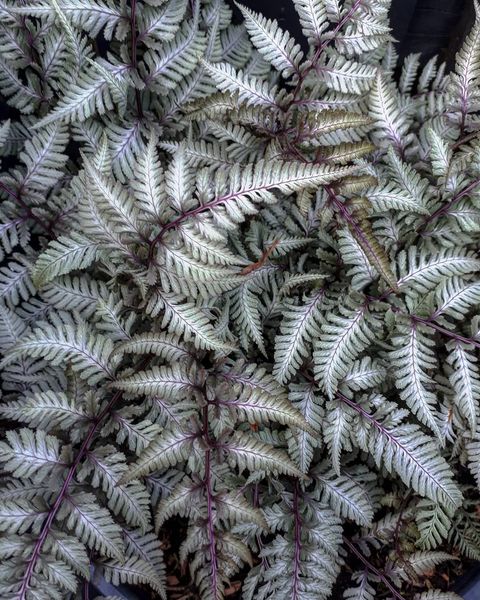
Japanese painted fern is one of the few fern species whose fronds are not in any of the shades of green! That is why this magnificent plant always attracts the eye and stands out wherever you place it.
As its name suggests, it is native to Japan but can also be found in other parts of Asia and has recently become a very popular outdoor fern worldwide.
The deciduous painted Japanese fern is a perennial, winter-hardy fern that will bring a variety of colors to the semi-shady part of the garden protected from direct sunlight.
The triangular fronds, with typical fern structures, have an atypical silvery-blue color with pronounced dark ribs.
Although Japanese painted fern can withstand harsh continental winters, it is good to grow young plants with a layer of mulch of dry leaves.
The plant loves hummus and nutritious soil with a lot of moisture, so in the spring, you can add a little compost to improve the structure of the soil and provide the necessary nutrients for lush growth.
6. Horsetail Fern (Equisetum Arvense)
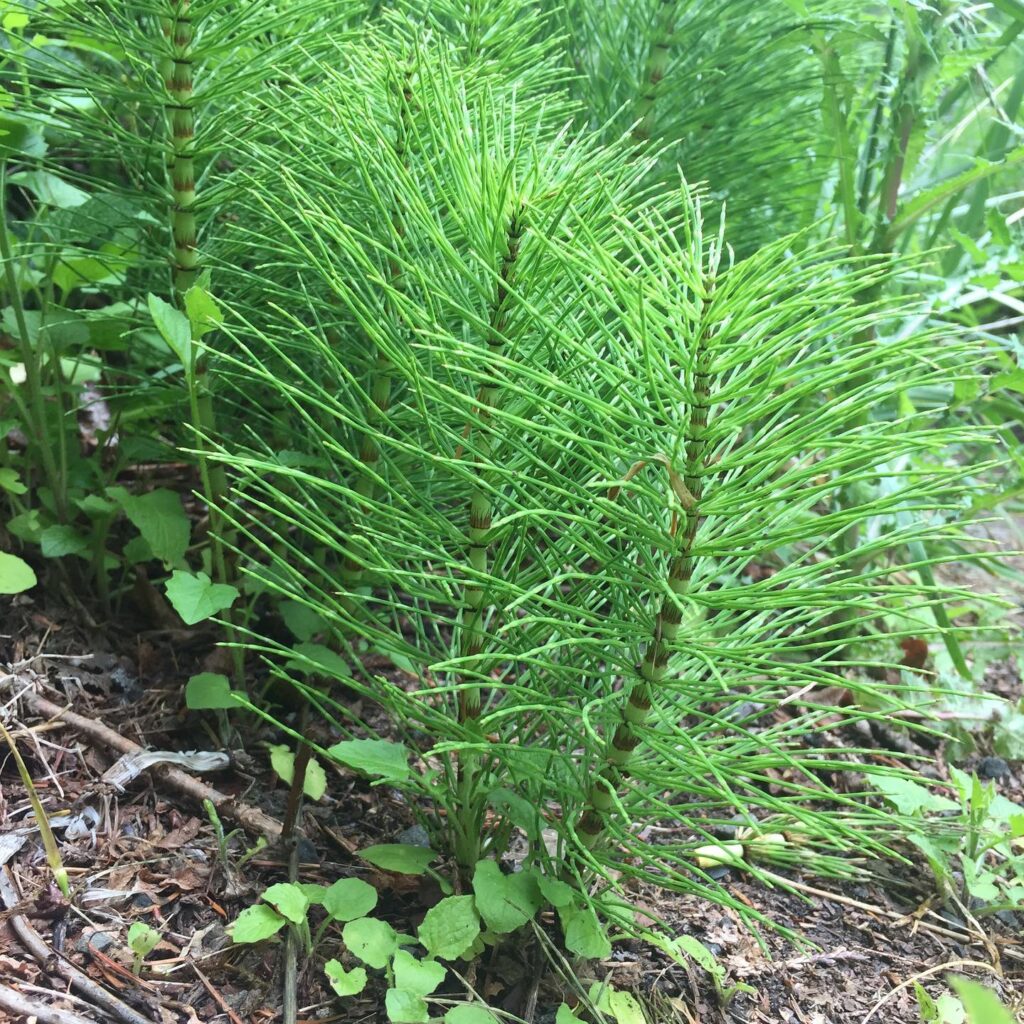
Horsetail fern or botanically Snake grass does not belong to ferns but their relatives from the Equisetaceae family. It is not propagated by pollen but by spores that form on fertile shoots like ferns.
It has an upright, 30 inches tall stem with pronounced rings or segments similar to a bamboo stem. The light green, straw-like leaves grow horizontally from the rings creating a cylindrical form.
Horsetail ferns grow in all parts of the world except Australia, inhabiting moist and organic-rich forest foothills and stream banks.
7. Japanese Tassel Fern (Polystichum Polyblepharum)
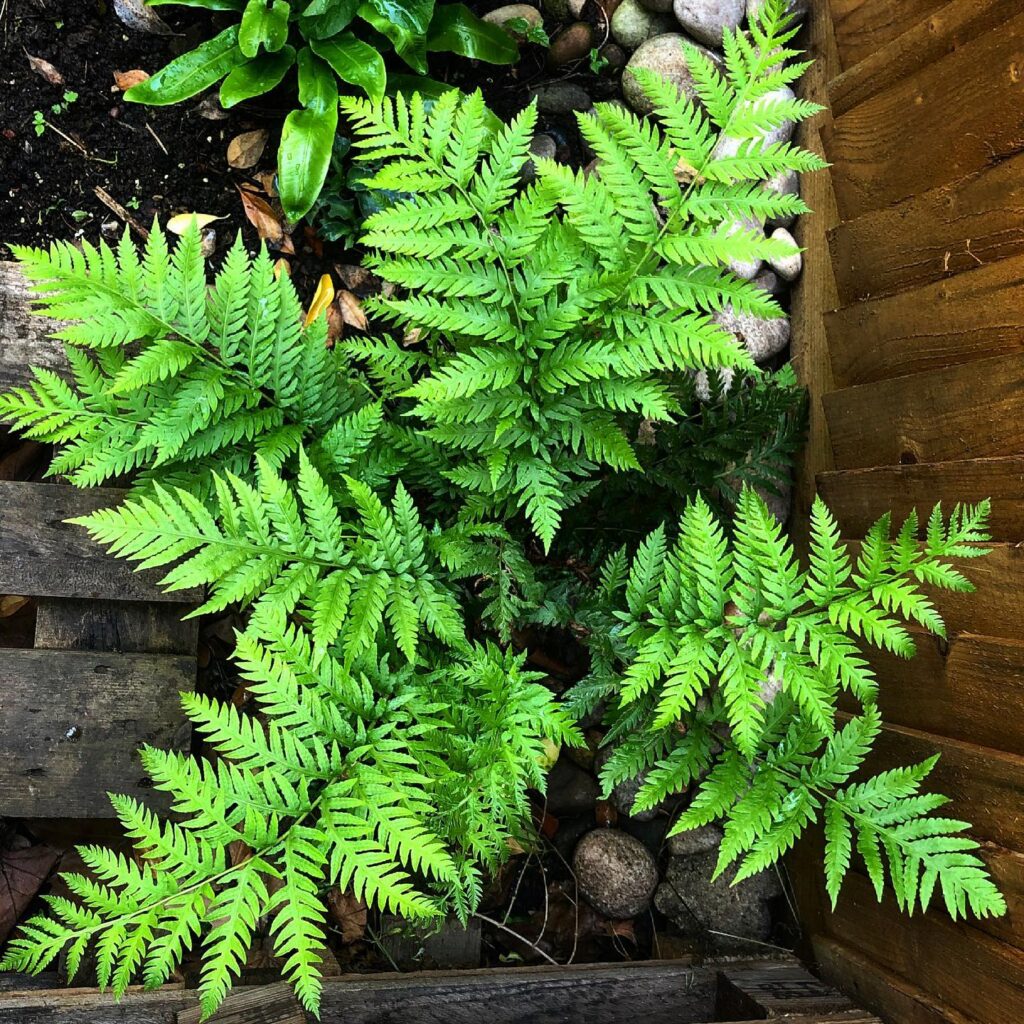
Another species of fern plant that comes from distant Asia is the Japanese tassel fern with the botanical name Polystichum polyblepharum.
This compact low or medium-high species forms a thickened, symmetrical, vase-shaped clump of tight, dark green arching fronds with a shiny metallic reflection. Unusual, golden yellow, tassel-like hairs cover the curled new fronds, explaining the plant’s name.
In areas with a mild climate, the aboveground part of the fern plant will not suffer from the cold, so it remains evergreen. However, in the spring, you could remove old and damaged fronds to encourage the growth of new shoots.
The plant is tolerant of soil type and grows on loamy, clay, or sandy soil as long as it is moderately moist and well-drained.
Its intense, glossy, pine green color stands out, especially if you plant it among other shade-loving plants with lighter or variegated leaves like hosta or astilbe.
8. Autumn Fern (Dryopteris Erythrosora)
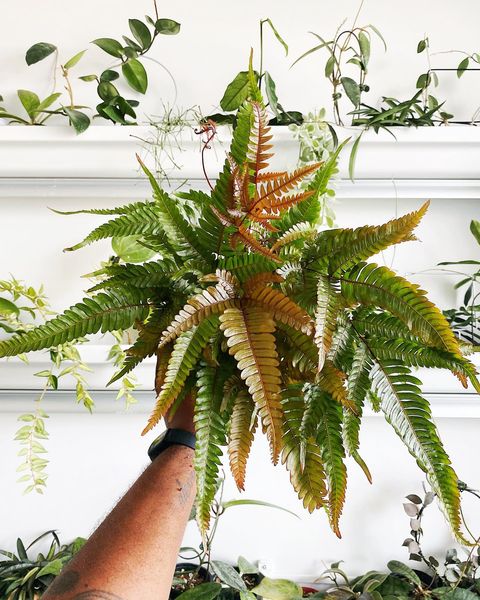
These ferns are interesting because they display variegation throughout the growing season. When they emerge from the soil in the spring, the new fronds have a copper-red color that changes as the plants grow, developing bright dark green fronds.
Therefore, the different stages of growth of fronds provide a wealth of colors that resemble the forest’s colors in autumn.
The fern grows in the USA climate zone 5 or more. Unlike most other ferns, this one can tolerate short exposure to direct sunlight in the afternoon.
It is a modest and undemanding species around which there is not much extra care once planted in the garden.
Holly Fern (Cyrtomium Falcatum)
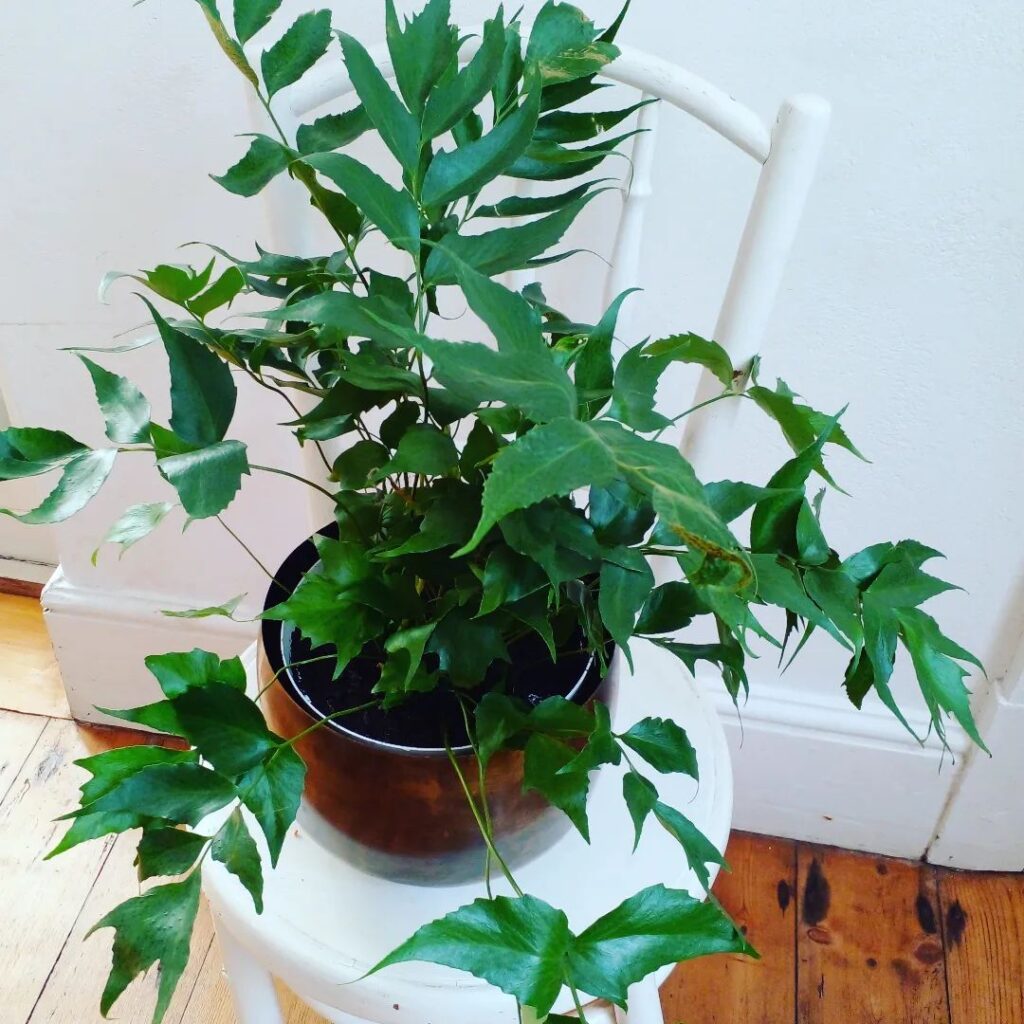
Holly fern got its name because of its serrated, glossy, dark green leaves with accentuated spikes that resemble Ilex aquifolium or English holly.
It is native to East Asia but has adapted well to many other parts of the world. For example, Holly Fern Plants can withstand harsh winters in the northern hemisphere with autumn root protection, and in the US climate zone 6 to 9, it is an evergreen fern that keeps fronds during the winter.
Although they are mainly grown as undemanding garden plants, they can also be grown in pots as indoor ferns because they do not have a deep or branched root.
9. Carrot Fern (Onychium Japonicum)
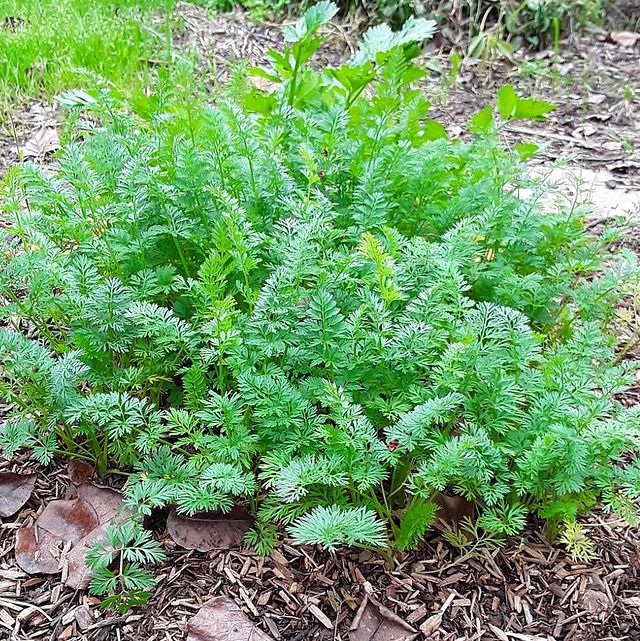
Like the Japanese painted ferns, Carrot fern comes from Asia, growing naturally as a high ground cover on shady and wet forest edges beyond the reach of direct sunlight.
The leaves grow on wiry, dark, gracefully arching stems forming 14 to 24 inches tall and 36 to 60 inches wide feathery structure.
Unlike other ferns from Asia, this plant is not entirely resistant to cold and thrives outside only in USA climate zones 7 to 9, where they will not lose aboveground leaf mass during winter.
10. Alpine Wood Fern (Dryopteris Wallichiana)
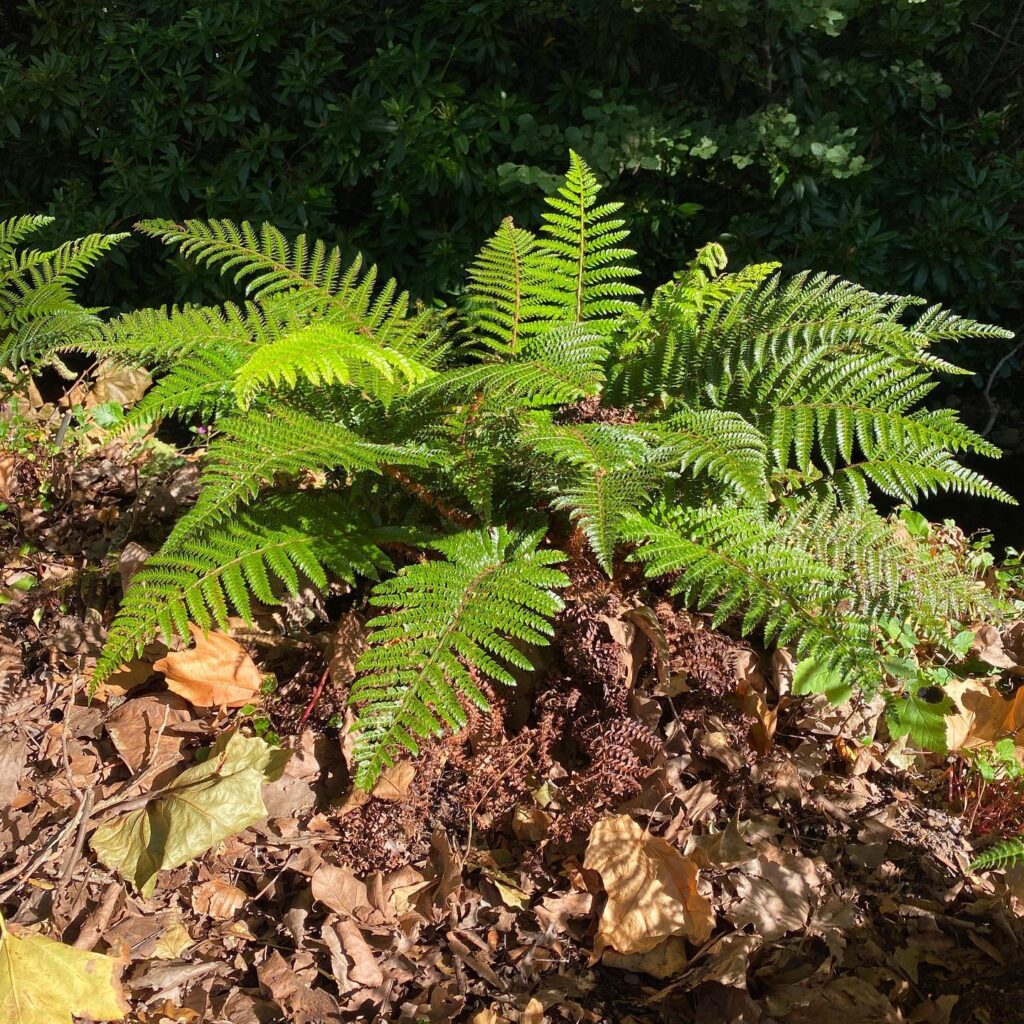
Alpine wood fern or Dryopteris wallichiana is another hardy plant that will delight you every spring with an explosion of new dark-ribbed, yellow-green fronds.
It can grow up to three feet in height and looks impressive when it spreads and forms colonies. The feathery, gracefully bent, neatly arranged fronds in a vase shape are an excellent natural decoration for the wet and shady part of the garden.
Alpine wood fern is deciduous, but in areas with a milder climate, it can retain part of its leaf mass even in the winter months.
11. Royal Fern (Osmunda Regalis)
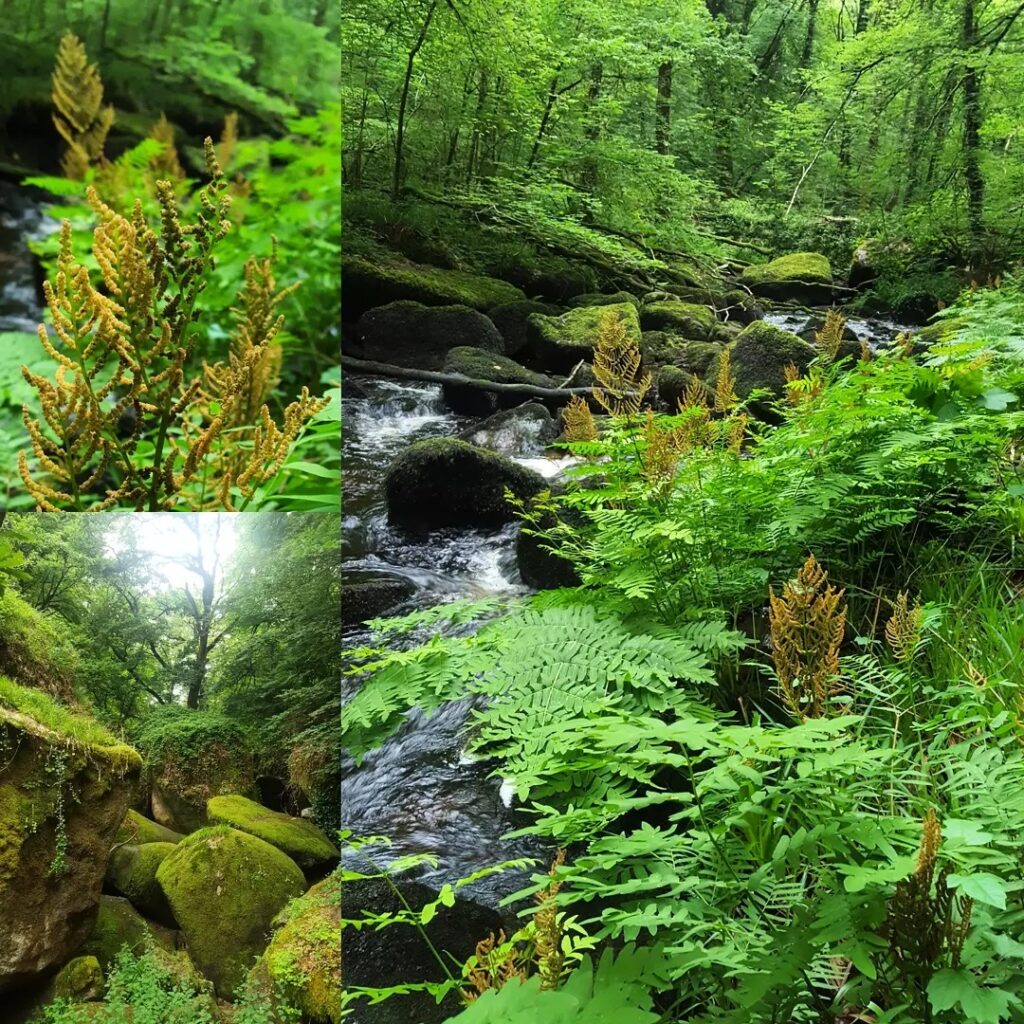
Osmunda regalis, or Royal fern, is a widespread species in Europe, Africa, and Asia, where it grows on moist forest edges, in wetlands, or on the banks of forest streams.
This bushy fern is sometimes called the flowering fern because of its unusually columnar fruity fronds with spores growing in the middle of the rosette.
This robust plant can grow six feet tall and three feet wide, with fronds two to five feet long and up to 18 inches wide.
It grows best on organically rich soil with acid reactions (pH 6-8) in pound areas or other very humid and wet places.
Unlike other ferns, Royal fern tolerates year-round shallow water without fear of rotting its roots.
12. Western Sword Fern (Polystichum Munitum)
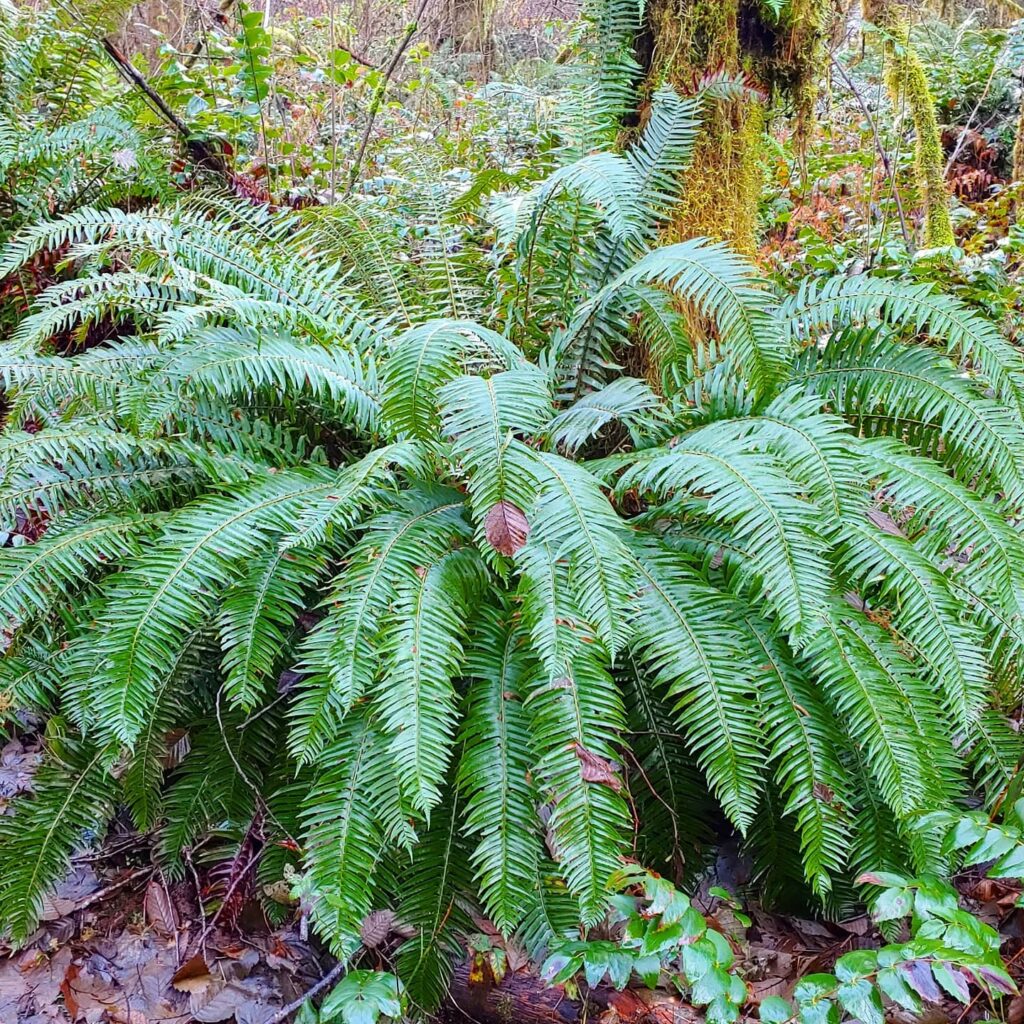
This classic fern species is native to North America, growing from Alaska to California. It has a few feet long fronds resembling a sword blade, which explains its name.
Unlike many other species, this highly adaptable plant can withstand even direct sunlight as long as the soil is moist enough.
On the other hand, this versatile plant can withstand relatively dry soil under the canopy of trees such as redwood or western red cedars.
Western sword fern is a deciduous species, meaning fronds complete their life in autumn at the end of the vegetative cycle. Yet, dead fronds stay attached during the winter.
Therefore, you should cut them in early spring to make room for new pale green fronds to grow before starting a new cycle green rosette.
Long, elegant arching fronds are also often used in flower arrangements and bouquets because they retain freshness for a long time. Do not hesitate to cut some because the plant produces a lot of fronds, so cutting will not disturb its shape.
Frequently Asked Questions
What are Tree ferns?
A: Tree fern looks like a palm tree with a trunk and a canopy. Despite its appearance, this plant is genuinely fern, but the name Tree fern seems entirely appropriate due to its size and shape.
The most famous species are Australian tree fern, Soft tree or Man fern, and Tasmanian Cup Fern.
What is the tallest fern?
A: The giant tree fern Cyathea australis holds the ‘world record’ among the fern plants growing 65 feet high with fronds up to 9 feet long!
Is Water clover a fern?
A: Yes. This plant is a fern, although it does not look much like other members of the group. Water clover fern is a small aquatic plant native to New Caledonia with the botanical properties of ferns and the appearance of four leaf clover.
After learning about different types of ferns, make sure to check out our other list of plant types:
Fall In Love With 19 Stunning Types Of Alocasia
5 Breath-taking Types Of Calathea For Your Private Tropic Corner
21 Types Of Fuchsia Plants & Reasons Why Fuchsia Plants Are So Popular (With Pictures)







